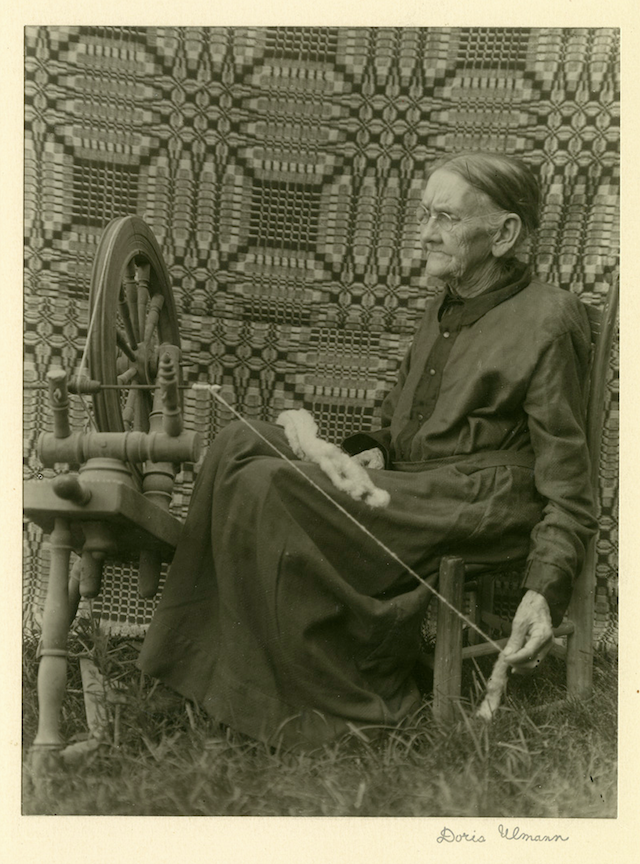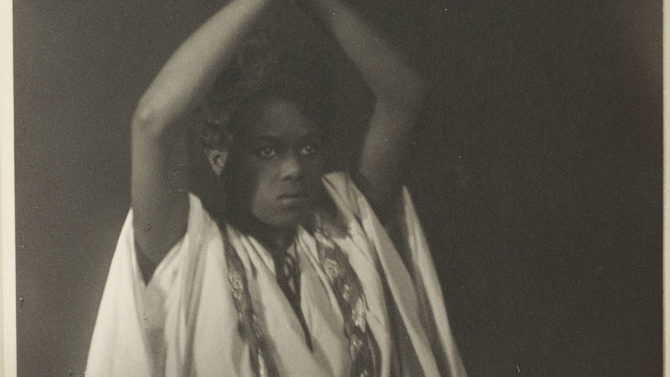Whether photographing the mountains of Appalachia, the lowlands of coastal Georgia or the cityscape of New York, photographer Doris Ulmann maintained an ethnographer’s keen eye while humanizing members of marginalized groups. Currently on view at the Georgia Museum of Art through Nov. 18, “Vernacular Modernism: The Photography of Doris Ulmann” is the first complete retrospective of works by the artist. Organized by curator of American art Sarah Kate Gillespie, the exhibition consists of approximately 100 of Ulmann’s photographs alongside related books, craft items and works of art by a few of her contemporaries.
Active between 1918–1934, Ulmann’s work reflects the influences of multiple art movements, illustrating a major shift in American photographic portraiture. She was trained during the height of pictorialism, a movement that sought to elevate photography to a fine art by encouraging artists to manipulate the image, most often by deliberately blurring the subject in order to intensify atmosphere. As she began publishing portraits of prominent writers, actors and intellectuals in magazines, however, her work took on a much more photojournalistic approach, incorporating the clean lines and sharp focus that was becoming popular with modernism.
Ulmann’s first main body of work consists of studio portraits of the literary and cultural elite, with an emphasis placed on the inclusion of professional African Americans and women—a rare pursuit at the time. With each portrait, Ulmann sought to convey enough of the individual’s personality and character for viewers to perceive a sense of what they were like as a person. Typically shot inside the comfort and privacy of her apartment in New York City’s Upper East Side, the subjects appear at ease and perhaps more approachable than they would have been in public settings.

“Preparing for Baptism” by Doris Ulmann
As she began to venture outside of the city to the New England countryside, she took images of members of religious groups such as the Shakers, Mennonites and German Baptist Dunkards, foreshadowing her deep interest and dedication to capturing members of cloistered communities.
Though she succeeded in photographing several notable icons—Albert Einstein appears on the gallery wall, for example—her most interesting work gives insight into the lives of the African-American and Gullah communities of coastal South Carolina and Georgia, as well as Appalachian craftspeople and other inhabitants of the rural South. After meeting novelist Julia Peterkin, the two traveled together through the South and combined their passions to create Roll, Jordan, Roll, a collection of photographs and essays. Published in 1933, the book was the only one of its kind from the ’30s to focus exclusively on the lives and experiences of Southern African Americans.
Her travels continued with John Jacob Niles, a musician, actor and folklorist who served as her near-constant companion until her death in 1934. Sensing the wake of urbanization, Ulmann took deep interest in preserving the rural traditions and folklore of Appalachia. Traveling throughout Virginia, Kentucky, Tennessee, Georgia and South Carolina, she documented craftspeople woodworking, quilting, spinning and basket weaving. Close-up images of hands hammering horseshoes and making hooked rugs home in on the technique of each craft. Whether a blacksmith, doll maker, potter or chair maker, each subject was photographed with utmost dignity. Many of these images are published in Allen Eaton’s book Handicrafts of the Southern Highlands.

“Aunt Lou Kitchen” by Doris Ulmann
In addition to “Vernacular Modernism,” the museum is currently exhibiting “For Home and Country: World War I Posters from the Blum Collection” and “One Heart, One Way: The Journey of a Princely Art Collection.” The museum will celebrate all temporary shows during Museum Mix, a late-night art party featuring a set by DJ .53, aka MFA sculpture student AC Carter (who also performs as Lambda Celsius), on Sept. 27 from 8–11 p.m., and again during the quarterly reception 90 Carlton: Autumn on Oct. 19 at 5:30 p.m.
Additional programming for “Vernacular Modernism” includes a Tour at Two on Sept. 26 and Oct. 17 at 2 p.m. and a Teen Studio on Nov. 8 at 5:30 p.m. Lectures will explore “Soft Focus Ethnography and Vernacular Modernism” on Oct. 12 at 3 p.m. and “Seeing Appalachia” on Nov. 8 at 5 p.m. Film screenings include A Lasting Thing for the World: The Photography of Doris Ulmann on Oct. 4 and O Brother, Where Art Thou? on Oct. 11 at 7 p.m. The Athens Chamber Singers will offer a special Music of Appalachia program featuring folk, bluegrass, spirituals and coal-mining songs on Nov. 4 at 2 p.m.
Like what you just read? Support Flagpole by making a donation today. Every dollar you give helps fund our ongoing mission to provide Athens with quality, independent journalism.










